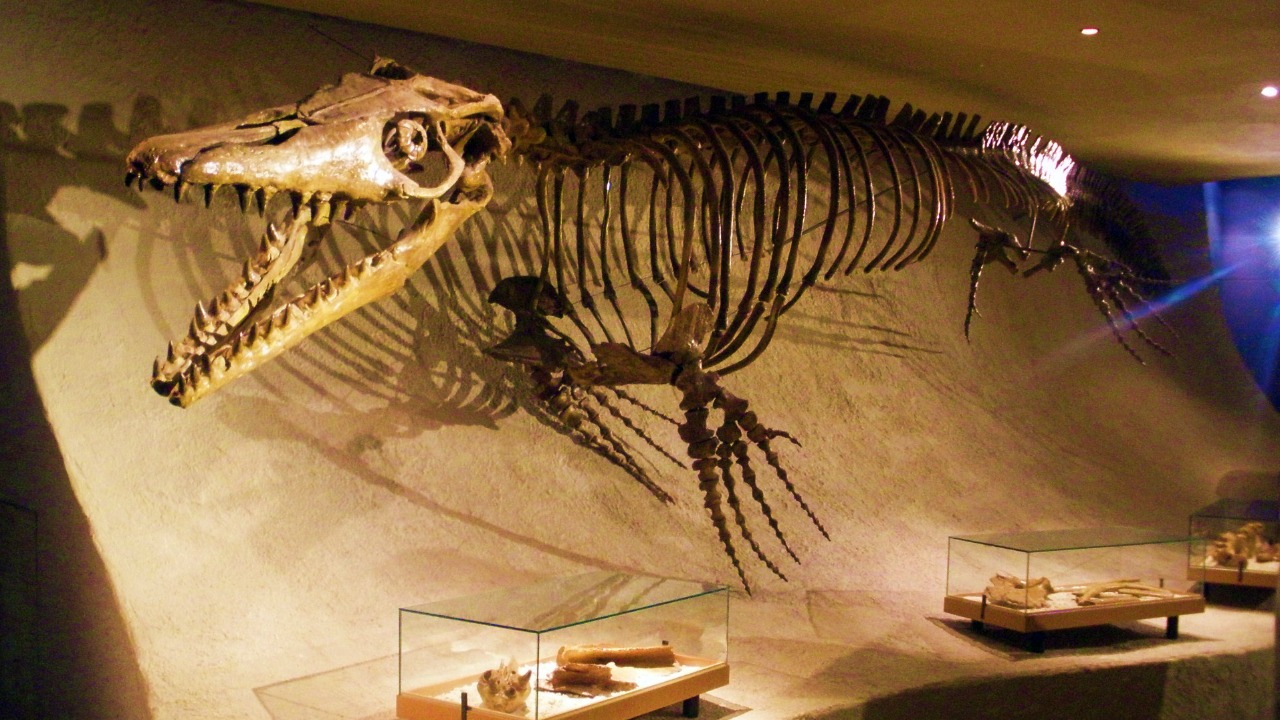
In a groundbreaking discovery, scientists have unearthed the first fossil egg ever found in Antarctica. This remarkable find, a football-sized specimen, was extracted from 68-million-year-old rocks on the continent’s west coast. The egg, nicknamed “The Thing” due to its mysterious origins, is believed to have been laid by a mosasaur, an extinct marine reptile. Measuring about 11 inches long, it is the largest soft-shelled egg ever identified and ranks as the world’s second-biggest egg overall. This discovery, detailed in a June 2020 study, offers new insights into prehistoric life in polar regions during the final days of the dinosaurs.
Discovery of the Fossil Egg
The journey to uncovering this fossil egg began in 2011 when researchers, including Julia Clarke from the University of Texas at Austin, stumbled upon the unusual, football-shaped fossil during fieldwork on James Ross Island in Antarctica. Initially, the team mistook it for a possible dinosaur egg or a geological concretion. It wasn’t until later analysis that the true nature of the specimen was revealed. The egg was preserved in Late Cretaceous sediments, dating back approximately 68 million years, and was excavated from marine deposits that suggest a coastal environment at the time of its deposition. This context is crucial for understanding the ecological conditions of the era.
In 2019 and 2020, detailed preparation and CT scanning of the specimen confirmed its identity as a fossilized egg. This revelation was published in the journal Nature on June 17, 2020. The discovery has sparked significant interest in the scientific community, as it provides a rare glimpse into the reproductive strategies of ancient marine reptiles. The egg’s preservation in such an extreme environment underscores the adaptability of these creatures and the dynamic ecosystems that existed in Antarctica during the Late Cretaceous period.
Characteristics of the Egg
The fossil egg measures approximately 28 by 18 centimeters (11 by 7 inches) and features a leathery, soft shell composed of fibers, distinguishing it from the hard calcite shells of bird or reptile eggs. This unique composition sets it apart from typical amniote eggs and highlights the diversity of reproductive adaptations among ancient species. Internal CT scans revealed no embryo or yolk remnants, but the structure includes a mammillary layer and continuous fibers, confirming it as a soft-shelled egg larger than any known from modern or extinct species.
Dubbed “The Thing” by the discovery team due to its enigmatic appearance and initial uncertainty, the egg surpasses the previous record for soft-shelled eggs held by a 13.7-centimeter ichthyosaur egg from Germany. This finding not only challenges previous assumptions about the size limits of soft-shelled eggs but also expands our understanding of the evolutionary pathways that led to the development of such reproductive strategies. The egg’s size and composition provide valuable clues about the biology and ecology of the creatures that laid it.
Link to Mosasaurs
Evidence strongly suggests that the egg belonged to a mosasaur, a giant marine lizard that could reach lengths of 15 meters. This conclusion is based on the egg’s size, its Antarctic location, and the prevalence of mosasaur fossils in nearby Seymour Island strata from the same era. Mosasaurs, which are close relatives of modern monitor lizards and snakes, are proposed as the likely parents because no other egg-laying marine reptiles match the fossil’s profile in that polar setting during the Late Cretaceous.
The discovery of this egg suggests that mosasaurs may have nested on Antarctic shores, potentially indicating year-round residency in the region rather than seasonal migration. This hypothesis is supported by associated fossils of species like Kaiwhekea and Pannoniasaurus, which further illustrate the diverse marine life that thrived in these ancient polar ecosystems. Understanding the nesting behaviors and habitat preferences of mosasaurs can provide valuable insights into the broader ecological dynamics of the time.
Significance for Paleontology
As the first egg fossil from Antarctica, this discovery provides direct evidence of reproduction among high-latitude marine vertebrates 68 million years ago. It challenges previous assumptions about polar ecosystems being too harsh for large reptile breeding, suggesting that these environments were more hospitable than previously thought. The egg’s status as the world’s second-largest known egg, after a 34-centimeter specimen from a Madagascan elephant bird, expands our understanding of squamate reproductive strategies and the evolution of soft-shell eggs in aquatic environments.
This find highlights Antarctica’s role as a key archive for Late Cretaceous biodiversity, with implications for how climate and geography influenced the distribution and life cycles of mosasaurs before their extinction at the end of the dinosaur era. By studying such fossils, scientists can gain a deeper understanding of the evolutionary pressures and environmental conditions that shaped the development of ancient marine reptiles. The discovery of “The Thing” underscores the importance of continued exploration and research in Antarctica, as it holds many more secrets waiting to be uncovered.